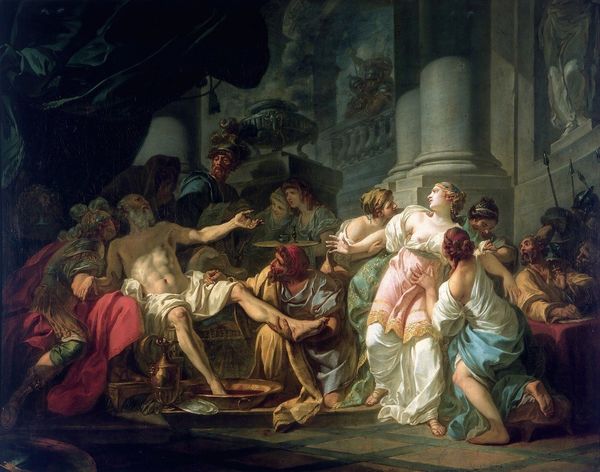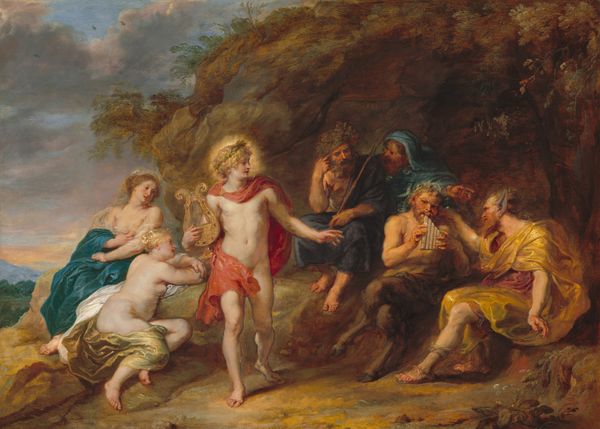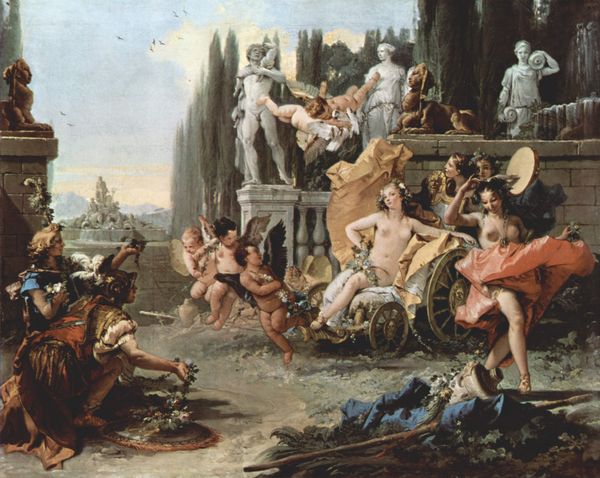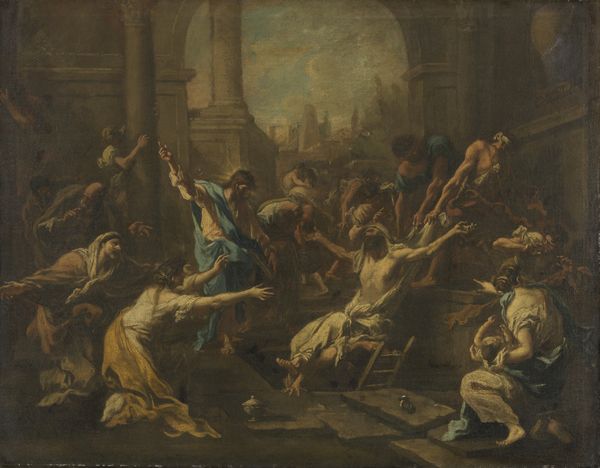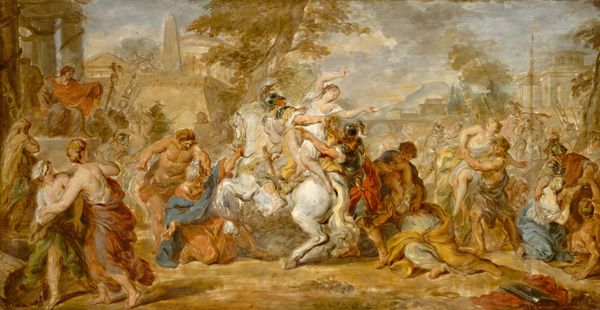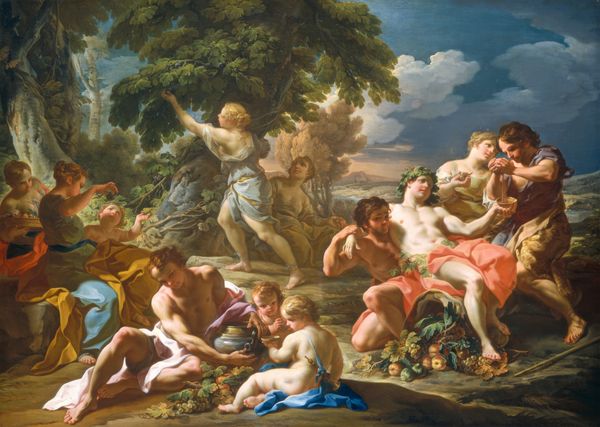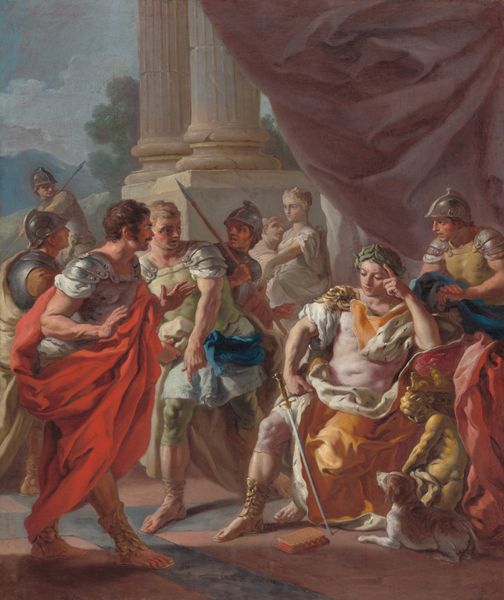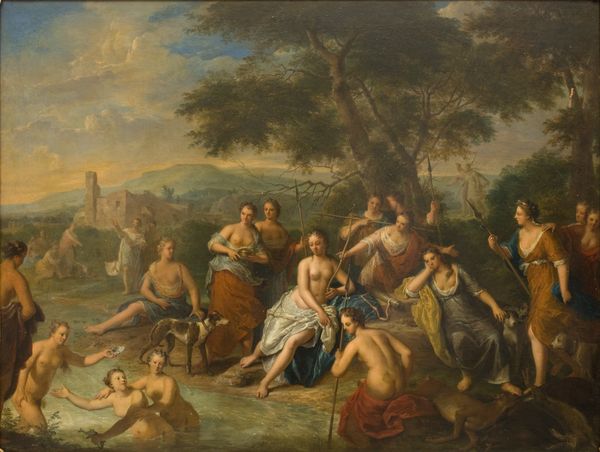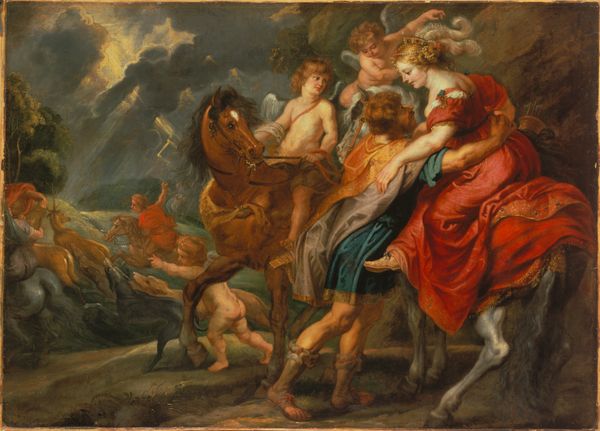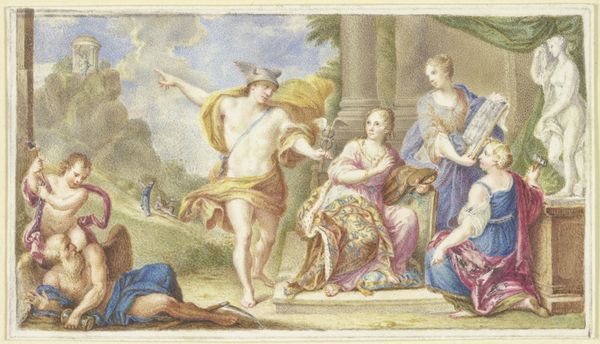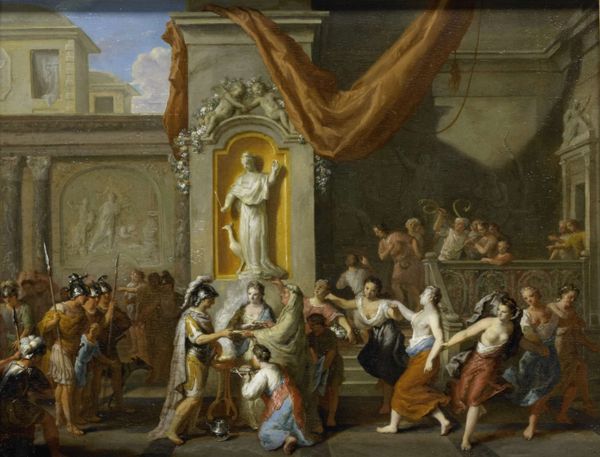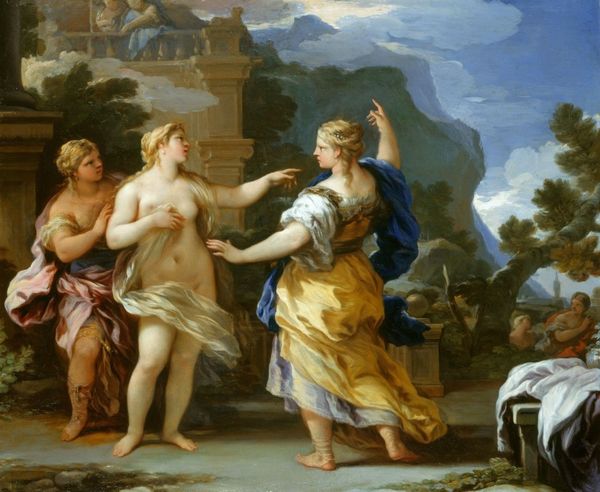
painting, oil-paint
#
allegory
#
baroque
#
painting
#
oil-paint
#
figuration
#
oil painting
#
mythology
#
history-painting
#
academic-art
Copyright: Public domain
Curator: This is Placido Costanzi's painting, "The Rape of the Sabine Women." The medium, of course, is oil paint on canvas, characteristic of the period and its academic style. Editor: My initial reaction is how deceptively…pastel it is, considering the subject matter. There’s this almost romantic softness to the light, which seems jarring when you look closer at the chaos of the figures. Curator: Exactly. Costanzi meticulously crafted this composition. We see clear indications of labor. Notice the deliberate layering of pigments to achieve the skin tones, and the contrast of textures created through brushwork. It reveals the artist's skillful manipulation of materials. Editor: And beyond the technique, there’s this blatant theatricality. The scene is rife with abduction and panic, frozen in a classically idealized moment, playing out a highly problematic foundational myth of Rome. I think we really need to engage with the implications of portraying violence, specifically violence against women, in such a…composed way. Curator: I see it similarly, in its historic context: these artists worked with mythology and historical subjects to justify patrons as heroic rulers. Think about it: even the choice of canvas itself served a purpose – its production, its trade… materials tell a deeper story about cultural values. Editor: Yes, and that value is precisely what we need to question. Consider the Sabine women—objects in this narrative, reduced to symbols of conquest and fertility, their individual voices erased. We need to read against the grain to understand how power operates through these supposedly glorious images. How does this scene naturalize, and therefore perpetuate, acts of violence? Curator: I think it's vital to look at where he gets these raw materials – how pigments were made. We need to look beyond to truly understand how economic systems worked at the time. This allows us a material analysis rather than only through theoretical models. Editor: I do understand your point. But ultimately I consider we cannot disengage the critical implications from any reading of the painting, whether stylistic or related to the economics of pigment. The historical context serves as a brutal mirror of our own, raising critical questions around representation, agency, and the enduring legacy of patriarchy. Curator: A point well-taken. Analyzing these artistic products reveals how economic practices, class and artistry are embedded in the artworks. I like to come closer to it by seeing what the physical artworks tell about historical economies. Editor: By facing that complex relationship, it opens space for crucial discussions on history, art, and power. Thanks for your insights, this piece deserves them.
Comments
No comments
Be the first to comment and join the conversation on the ultimate creative platform.
